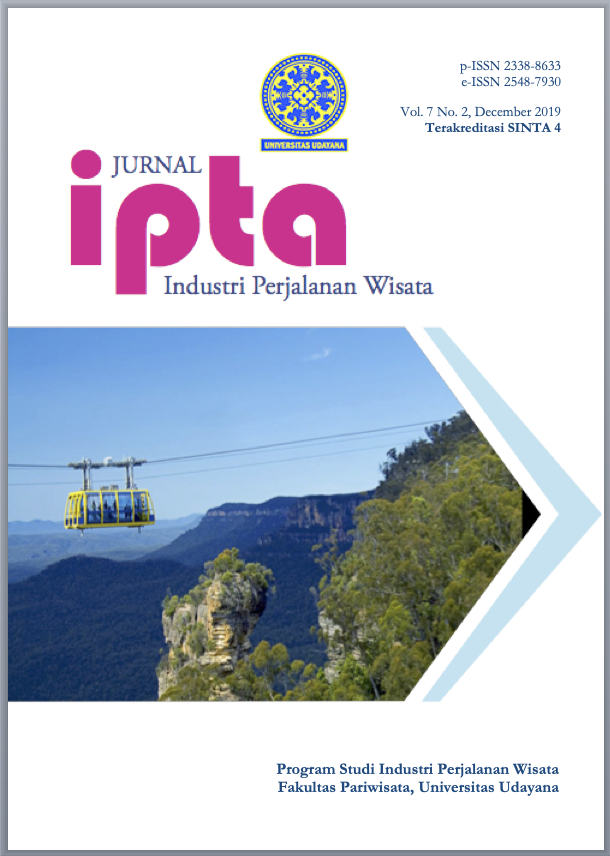STRATEGI PEMASARAN TAKSI BANDARA NGURAH RAI DENGAN METODE BGC (BOSTON CONSULTING GROUP)
Abstract
The purpose of this research is to find out the right marketing strategies and competitiveness by identifying and analyzing the internal and external environment that affect the Ngurah Rai Airport Taxi Cooperative. In this study using marketing strategy analysis, namely BCG/Boston Consulting Group Matrix and SWOT (Strength, Weakness, Opportunity, Threats) analysis. BCG matrix to determine the level of market growth and relative market share. SWOT analysis to analyze strengths, weaknesses, opportunities and threats, then using segmenting, targeting, positioning/STP and 7P (marketing mix) results of the data obtained and then analyzed with IFAS and EFAS. The types of data used in this study are qualitative and quantitative data, primary and secondary data. Determination of samples in this study using purposive sampling method as many as 50 respondents. Data collection techniques by observation, questionnaires, structured interviews, and literature study. The results of the BCG matrix research, based on the calculation of the market growth rate is 1.35% and the result of the calculation of the relative market share is 1.45 x> 1 so that it is in the position of Cash Cow. The marketing strategy that can be carried out by the Ngurah Rai Airport Taxi Cooperative is to maintain the market, create new products, find new businesses. The strategy offered in the Cash Cow quadrant the company must always keep the company in a stable condition. The results of the SWOT analysis study from IFAS assessment were 2.66 and EFAS was 2.28. Then the position of the SWOT diagram is Growth Stability which is the company must determine efforts to strengthen market share, increase sales, pursue large profits by diversifying/expanding the market.
Downloads
References
Augusty, Ferdinand. 2006. Metode Penelitian Manajemen: Pedoman Penelitian Untuk Skripsi, Tesis dan Disertasi Ilmu Manajemen. Semarang: Badan Penerbit Universitas Diponegoro.
Kotler, Philip, Armstrong, Gary. 2012. Prinsip-Prinsip Pemasaran. Jakarta: Erlangga.
Kusmayadi dan Endar Sugiarto. 2000. Metodologi Penelitian dalam Bidang Kepariwisataan. Jakarta: Gramedia Pustaka Utama.
Pratama, Alfin Surya. 2016. Analisis Strategi Pemasaran Roti Mandiri Dengan Pendekatan Metode Boston Consulting Group (BCG), SWOT dan Benchmarking. Diploma thesis, Universitas Muhammadiyah Surakarta.
Rangkuti, Freddy. 2006. Analisis Swot Teknik Membedah Kasus Bisnis, Jakarta: PT Gramedia Pustaka Utama.
Sugiono, dkk. 2003. Teknik Sampling. Jakarta : PT. Gramedia Pustaka Utama.
_____ . 2014. Metode Penelitian Kuantitatif, Kualitatif dan R&D.Bandung: Alfabeta.
Tjiptono, Fandy. 1997. Strategi Pemasaran. Yogyakarta: Andi Offset.





